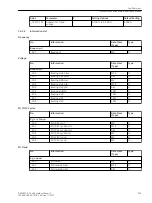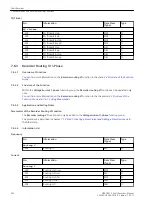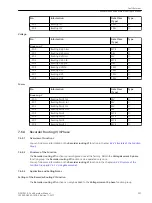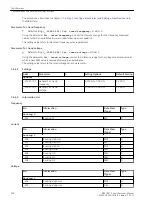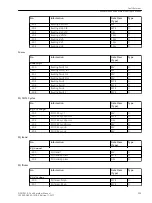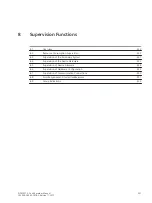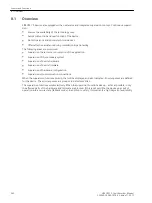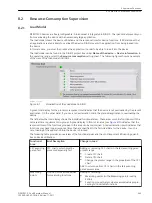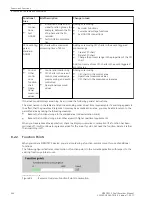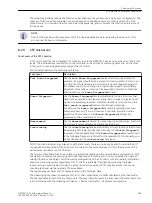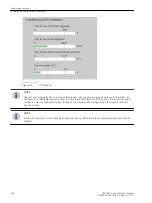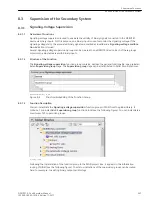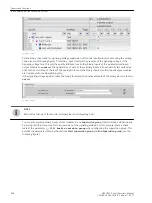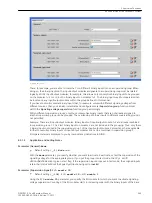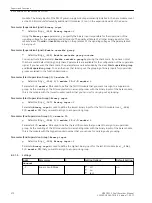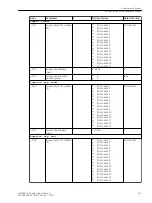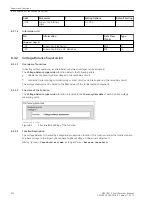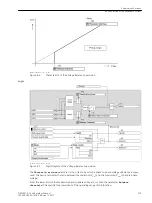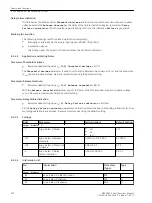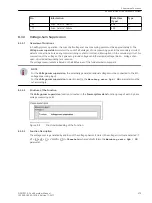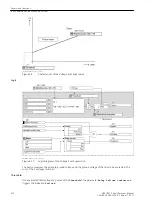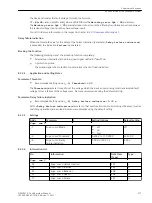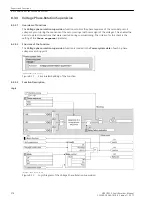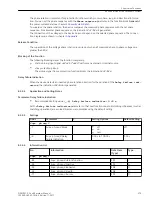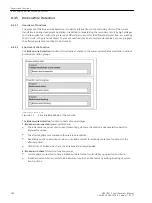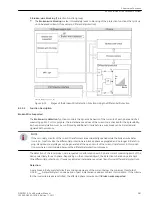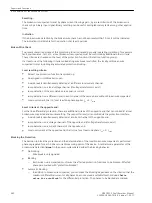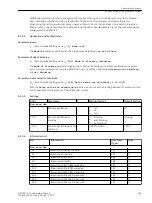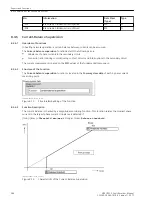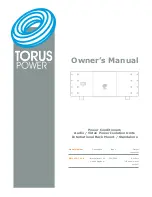
[sc_gruppe_de, 1, en_US]
There, for example, you are able to combine 1 to n different binary inputs into one supervision group. When
doing so, the binary inputs on the input/output modules assignable to a supervision group must be related
logically. With 3 input/output modules, for example, this allows only consecutive binary inputs to be grouped
on the modules 1+2 or 2+3, but no binary inputs on modules 1+3. The binary inputs used for supervision can
be located on any input/output module within the group defined in this manner.
If you have to monitor several binary inputs that, for example, work with different signaling voltages from
different sources, then you can also instantiate and configure several Supervision group function blocks
within the Signaling-voltage supervision function group accordingly.
Within different supervision groups, only those consecutive binary inputs that are not already assigned to
another supervision group can be grouped. The overlapping of binary inputs in different supervision groups is
not permitted.
Example: There are 4 input/output modules. Binary inputs of input/output module 1+2 are already combined
in supervision group 1. The 2 last binary inputs on module 2 are not included in the grouping. Thus, only these
2 binary inputs not used in the supervision group 1 of the input/output module 2 as well as, where applicable,
further consecutive binary inputs of input/output modules 3+4 can be combined in supervision group 2.
Error parameters are displayed to you by inconsistency indications in DIGSI.
Application and Setting Notes
Parameter (General):
Mode
•
Default setting
(_:1) Mode
=
on
With the
Mode
parameter, you specify whether you want to activate, deactivate, or test the supervision of the
signaling voltage for the appropriate group. If you put the group into test mode, the
Sig. volt.
disturbed
indication is given a test flag. If the supervision input drops out in test mode, the assigned inputs
retain their status without their quality attribute being set to invalid.
Parameter (Supervision Signal):
I/O module ID
•
Default setting
(_:104) I/O module ID
=
I/O module 1
Using the
I/O module ID
parameter, you specify the I/O module for which you want to activate signaling-
voltage supervision. Counting of the I/O modules starts in increasing order with the binary inputs of the base
8.3.1.4
Supervision Functions
8.3 Supervision of the Secondary System
SIPROTEC 5, Fault Recorder, Manual
369
C53000-G5040-C018-5, Edition 11.2017
Summary of Contents for SIPROTEC 5
Page 8: ...8 SIPROTEC 5 Fault Recorder Manual C53000 G5040 C018 5 Edition 11 2017 ...
Page 18: ...18 SIPROTEC 5 Fault Recorder Manual C53000 G5040 C018 5 Edition 11 2017 ...
Page 134: ...134 SIPROTEC 5 Fault Recorder Manual C53000 G5040 C018 5 Edition 11 2017 ...
Page 212: ...212 SIPROTEC 5 Fault Recorder Manual C53000 G5040 C018 5 Edition 11 2017 ...
Page 422: ...422 SIPROTEC 5 Fault Recorder Manual C53000 G5040 C018 5 Edition 11 2017 ...
Page 426: ...426 SIPROTEC 5 Fault Recorder Manual C53000 G5040 C018 5 Edition 11 2017 ...
Page 452: ...452 SIPROTEC 5 Fault Recorder Manual C53000 G5040 C018 5 Edition 11 2017 ...
Page 490: ...490 SIPROTEC 5 Fault Recorder Manual C53000 G5040 C018 5 Edition 11 2017 ...

